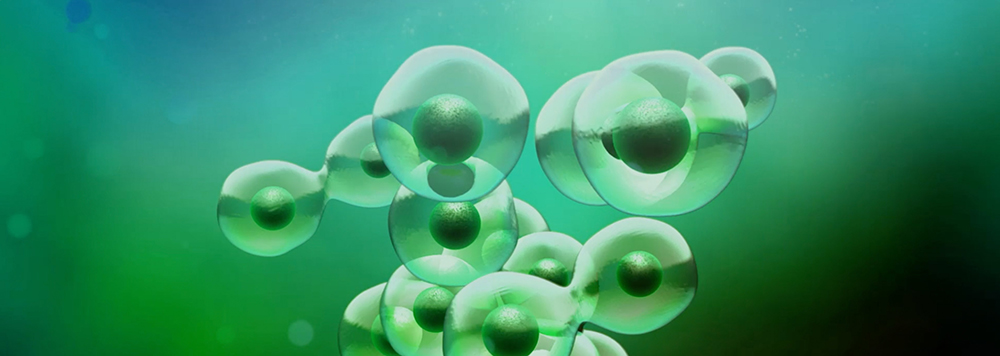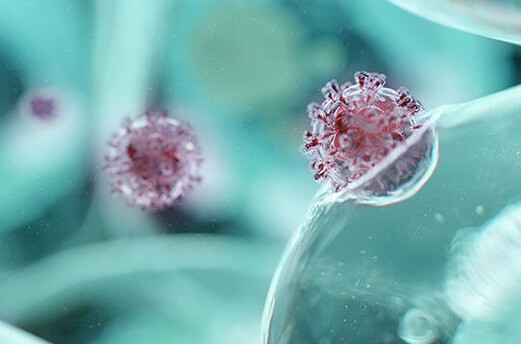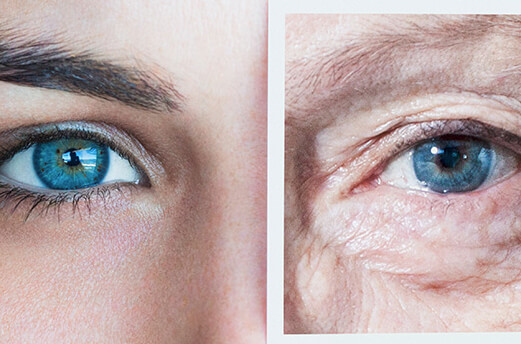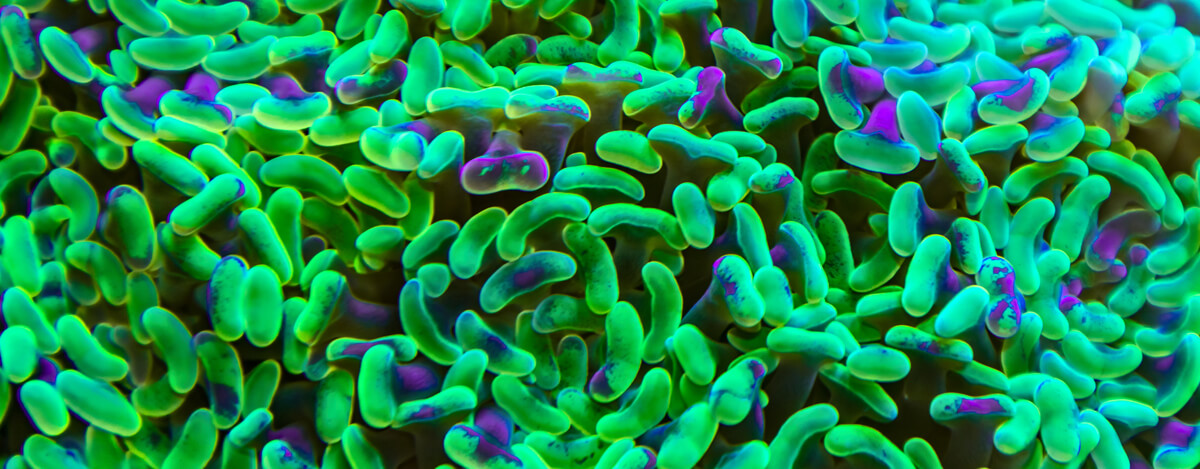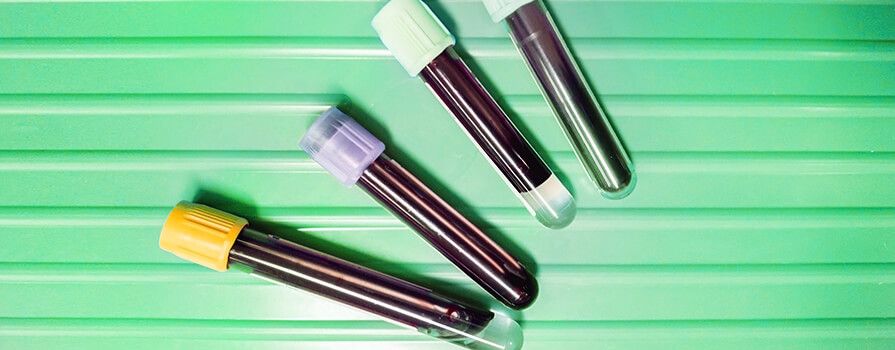
read time: 4 min
Health & Wellness
So what exactly is blood?
Is this a trick question? Everyone knows what blood is: it’s the fluid flowing throughout our body that helps keep us alive and healthy. And yes, that’s true. But there is so much more to it. Let’s take a look at some blood basics like its jobs, parts, and color. Then we’ll dig into scientific advances that revolutionize how we test blood today.
What is blood’s function in our body?
Blood serves many crucial purposes, each just as important as the next. By flowing through our arteries, capillaries, and veins, blood guides vital elements and information to every nook and cranny of our body. Here are some of its primary functions:
Circulating oxygen
When you think about what elements are needed to stay alive, oxygen probably comes to mind first. But oxygen can’t sustain life all on its own. Blood carries the oxygen from our lungs to other areas of our body.1
Delivering nutrients
From the protein-packed dinner you just had to the vitamins in your favorite superfoods, your well-being depends on blood distributing each nutrient throughout your body.1
Fighting infection
Our blood contains specialized white blood cells and proteins called antibodies. They work as a team to detect and attack intruders, like viruses and bacteria.1 Without their precision targeting, we wouldn’t be able to recover from even the slightest cold.
Balancing body temperature
Blood vessels in our skin constantly expand and constrict to regulate our body temperature. When we get too hot, our blood vessels expand to allow more blood to flow closer the surface of the skin where some of the heat can escape. When we get too cold, our vessels constrict to lessen the blood flow close to the surface of the skin and minimize heat loss. Have you ever noticed that people complain more about being cold as they get older? One reason is that our blood vessels gradually become stiffer and lose the elasticity needed to shift back and forth.2
Stopping damage
Blood’s self-repairing function, called clotting, helps stop bleeding. Certain proteins in the blood help turn “on” and “off” the clotting system as needed. Without the on/off switch, a blood clot could form at the wrong time and in the wrong place. This could lead to serious consequences, such as a stroke.
Removing waste
Blood even takes out the trash. It carries waste away from our tissues and sends it to the liver, kidneys, and intestines, which are designed to dispose of it.1
Many blood components in just 1 drop
Blood isn’t just a single element. Its multiple components each serve different roles.
Red blood cells
It’s the red blood cells that do the work of transporting oxygen from our lungs and distributing it throughout our body.3 Red blood cell donations often go to patients with blood loss from surgery or trauma. And yes, red blood cells have a lot to do with the color of blood—more on color later.
White blood cells
There are several types of white blood cells that fight off infections. Some make antibodies that alert other cells to attack viruses and bacteria. Other types of white blood cells consume and destroy bacteria to help prevent a dirty wound from causing a bloodstream infection. When donated, this component can help treat leukemia, lymphoma, or antibiotic-resistant infections.
Plasma
Plasma is the liquid part of the blood. It’s mostly made of water but also includes proteins, nutrients, and hormones.1 Donated plasma is vital for patients with severe burns or blood disorders, or those undergoing organ transplants or chemotherapy.
Platelets
Platelets create a biological bandage when a blood vessel gets damaged. They work together with a group of specialized proteins, called coagulation factors, to make a blood clot. Platelets are often donated to help those undergoing cancer treatments or organ transplant surgery.
The color of blood: red, blue, or what?
Spoiler alert: blood is red, and definitely not blue.
Whether flowing out of a wound or sitting in a test tube, when you see blood, you’re seeing red. Though depending on how much oxygen it has absorbed, it may be a brighter or darker shade of red.4 That’s why a single droplet of blood that just emerged from a papercut is bright red, but quickly turns darker as it’s exposed to the air.
What about that rumor you heard about blood being blue inside the body? False. That myth probably started because our veins appear blue-ish under our skin. But it’s merely an optical illusion from the way light is reflected through skin.
Deep cuts under the microscope
Now that we have the basics covered, let’s find out how scientists are able to take a deeper look at our blood.
A quick history lesson: microscopes weren’t always as sophisticated as the high-tech gadgets we see in labs today. The first microscope was invented in the 16th century5 and clumps of red blood cells were all that could be seen when looking at blood. But in the 1800s, microscope precision improved so much that white blood cells and platelets were visible for the first time.5 The quality of microscopes has advanced even more dramatically since then, allowing us to observe granules within the white blood cells and platelets. It’s even possible to see blood parasites under the microscope today.
Unravel health mysteries with different types of blood tests
Because blood plays such a foundational role in our body, it holds many secrets about our health. As our understanding about the science of blood advances, more sophisticated laboratory tests can be developed to expose new answers and insights.
Routine blood tests: getting the right answer, right away
Some tests give us definitive answers right away. Let’s use a complete blood count (CBC) as an example. It’s one of the most familiar types of blood tests. You may have had a CBC done as part of your last health checkup. And you’ve heard doctors shout “CBC, stat” on countless medical TV shows and movies.
Using a single sample of your blood, a CBC measures the amount and size of red blood cells, white blood cells, and platelets. It also detects the amount of hemoglobin, the protein that carries oxygen to your tissues. CBC results are used to determine if you have anemia, a condition in which your blood does not have enough red blood cells.
Advanced blood tests: answering complex questions
Other tests investigate more complex questions about our health. For example, finding an abnormality in the blood from a CBC or other routine test may lead to further tests to zero in on the cause of your anemia. These specialized, or advanced, laboratory tests can help your doctor get a complete picture of your health and identify what treatment is right for you. This level of testing holds insights into many types of conditions including infectious disease, hormone imbalance, cancer, and genetic diseases.
There is no single blood test that can tell us everything about our health. In fact, there are hundreds of unique types of blood tests, with new ones being developed all the time. But the more options lab experts create to test our blood, the more health mysteries we can investigate and solve.
References
1 Cologne, Germany: Institute for Quality and Efficiency in Health Care (IQWiG); 2006-. What does blood do?
InformedHealth.org. Updated August 29, 2019. Accessed November 11, 2022. https://www.ncbi.nlm.nih.gov/books/NBK279392/
2 Kohn, JC, Lampi, MC, Reinhart-King, CA. (2014). Age-related vascular stiffening: causes and consequences. Front Genet. 2015 Mar 30;6:112. doi: 10.3389/fgene.2015.00112
3 Dictionary of Cancer Terms.
National Cancer Institute. Accessed November 11, 2022. https://www.cancer.gov/publications/dictionaries/cancer-terms/def/red-blood-cell
4 Health Essentials: What Color Is Your Blood?
Cleveland Clinic. Published May 5, 2022. Accessed November 11, 2022. https://health.clevelandclinic.org/what-color-is-blood/
5 Hajdu, S. (2003) The Discovery of Blood Cells. Annals of Clinical and Laboratory Science, 33. https://doi.org/10.1016/s1369-8486(99)00017-5
6 Blood Donation Types and Collection Procedures.
America’s Blood Centers. Accessed November 11, 2022. https://americasblood.org/for-donors/blood-donation-types-and-collection-procedures/

